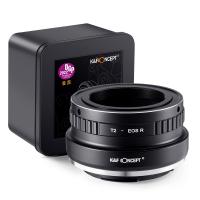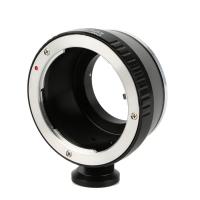At What Microscope Zoom Can You See Bacteria ?
Bacteria can be seen under a light microscope at a magnification of around 400x to 1000x.
1、 Optical Microscopy: Limited resolution, bacteria visible at 1000x magnification.
Optical Microscopy: Limited resolution, bacteria visible at 1000x magnification.
Optical microscopy has been a fundamental tool in microbiology for centuries, allowing scientists to observe and study microorganisms, including bacteria. However, it is important to note that the resolution of optical microscopes is limited by the wavelength of visible light, which restricts the level of detail that can be observed.
In general, bacteria are visible under an optical microscope at a magnification of around 1000x. At this level of magnification, individual bacterial cells can be observed, and their morphology, size, and arrangement can be studied. However, it is important to keep in mind that the actual visibility of bacteria may vary depending on factors such as staining techniques, sample preparation, and the specific characteristics of the bacteria being observed.
It is worth mentioning that recent advancements in optical microscopy techniques have allowed for improved resolution and visualization of bacteria. Techniques such as phase contrast microscopy, dark-field microscopy, and fluorescence microscopy have enhanced the contrast and sensitivity of bacterial imaging. Additionally, the development of super-resolution microscopy techniques, such as stimulated emission depletion (STED) microscopy and structured illumination microscopy (SIM), has pushed the limits of optical microscopy, enabling the visualization of bacterial structures at a higher level of detail.
However, even with these advancements, there are limitations to optical microscopy when it comes to observing bacteria. Some bacteria are extremely small, requiring higher magnifications or alternative imaging techniques, such as electron microscopy, to visualize them effectively. Furthermore, the complex three-dimensional structures of bacterial biofilms can pose challenges for optical microscopy, as they may require specialized imaging approaches to fully understand their organization and dynamics.
In conclusion, optical microscopy remains a valuable tool for observing bacteria, with a typical magnification of around 1000x. However, recent advancements in microscopy techniques have expanded our ability to visualize bacteria in greater detail, pushing the boundaries of what can be observed using optical microscopy alone.

2、 Electron Microscopy: Higher resolution, bacteria visible at nanometer scale.
At what microscope zoom can you see bacteria? Bacteria are microscopic organisms that cannot be seen with the naked eye. To observe bacteria, a microscope is required. However, the level of magnification needed to see bacteria depends on the type of microscope being used.
In light microscopy, which uses visible light to illuminate the specimen, bacteria can be observed at a magnification of around 1000x. This level of magnification allows for the visualization of bacterial cells and their basic structures. However, the resolution of light microscopy is limited by the wavelength of visible light, preventing the observation of finer details of bacterial structures.
To achieve higher resolution and observe bacteria at a more detailed level, electron microscopy is used. Electron microscopes use a beam of electrons instead of light to illuminate the specimen, allowing for much higher magnification and resolution. In transmission electron microscopy (TEM), bacteria can be visualized at the nanometer scale, with magnifications ranging from 10,000x to over 1,000,000x. This level of magnification enables the observation of bacterial ultrastructure, such as cell walls, membranes, and internal organelles.
It is important to note that the latest advancements in electron microscopy techniques, such as cryo-electron microscopy, have further improved the resolution and clarity of bacterial imaging. Cryo-electron microscopy allows for the visualization of bacteria in their native state, without the need for staining or fixation, providing even more detailed information about their structure and function.
In conclusion, electron microscopy, particularly transmission electron microscopy, offers the highest resolution for observing bacteria, allowing for their visualization at the nanometer scale. However, it is worth mentioning that the specific level of magnification required to see bacteria may vary depending on the research question and the specific details being investigated.

3、 Scanning Probe Microscopy: Can visualize bacteria at atomic scale.
At what microscope zoom can you see bacteria? Bacteria are microscopic organisms that are typically too small to be seen with the naked eye. To visualize bacteria, a microscope is required. The level of magnification needed to see bacteria depends on the type of microscope being used.
In light microscopy, bacteria can be observed at a magnification of around 1000x. This level of magnification allows for the visualization of bacterial cells and their structures, such as cell walls and flagella. However, the resolution of light microscopy is limited by the wavelength of light, making it difficult to observe the finer details of bacteria.
Electron microscopy, on the other hand, offers much higher magnification and resolution. Transmission electron microscopy (TEM) can visualize bacteria at a zoom level of up to 1,000,000x. This technique uses a beam of electrons to pass through a thin section of the bacterial sample, producing a highly detailed image of the internal structures of the bacteria.
Scanning electron microscopy (SEM) can also visualize bacteria at high magnification, typically up to 100,000x. SEM works by scanning a focused beam of electrons across the surface of the bacterial sample, creating a 3D image of the bacteria's external features.
More recently, advancements in microscopy techniques have allowed for the visualization of bacteria at an even higher resolution. Scanning probe microscopy, such as atomic force microscopy (AFM), can visualize bacteria at the atomic scale. AFM uses a tiny probe to scan the surface of the bacteria, providing detailed information about its topography and surface properties.
In conclusion, the level of microscope zoom required to see bacteria depends on the type of microscope being used. Light microscopy can visualize bacteria at around 1000x, while electron microscopy techniques like TEM and SEM can achieve much higher magnification. The latest advancements in microscopy, such as scanning probe microscopy, have enabled the visualization of bacteria at the atomic scale.

4、 Super-resolution Microscopy: Overcomes diffraction limit, reveals finer bacterial details.
Super-resolution microscopy is a revolutionary technique that has overcome the diffraction limit of traditional light microscopy, allowing scientists to observe finer details of bacterial structures. This breakthrough has significantly advanced our understanding of bacterial biology and has opened up new avenues for research.
The diffraction limit is a fundamental physical constraint that limits the resolution of traditional light microscopy to around 200-300 nanometers. Bacteria, being much smaller than this limit, were previously difficult to observe in detail using conventional microscopy techniques. However, super-resolution microscopy has changed this by utilizing various innovative approaches.
One such approach is stimulated emission depletion (STED) microscopy, which uses a combination of laser beams to excite and deplete fluorescent molecules in a controlled manner. This technique can achieve resolutions down to a few tens of nanometers, allowing researchers to visualize the intricate structures of bacteria.
Another super-resolution technique is structured illumination microscopy (SIM), which uses patterned illumination to extract high-frequency information from the sample. SIM can achieve resolutions of around 100 nanometers, providing a clearer view of bacterial structures.
More recently, single-molecule localization microscopy (SMLM) techniques, such as stochastic optical reconstruction microscopy (STORM) and photoactivated localization microscopy (PALM), have emerged. These techniques rely on the precise localization of individual fluorescent molecules to reconstruct high-resolution images. SMLM techniques can achieve resolutions of a few nanometers, revealing even finer details of bacterial structures.
It is important to note that the specific microscope zoom required to observe bacteria depends on the type of super-resolution technique used and the specific bacterial structures of interest. However, with the advancements in super-resolution microscopy, scientists can now observe bacteria at resolutions far beyond the diffraction limit, providing unprecedented insights into their biology and behavior.






























There are no comments for this blog.